Summary | Key concept | Science Story | Background Science | Activity | Curriculum links | Linked Activities
- Suggested Age Range: 9 – 10 years
- UK Primary Curriculum: Key Stage Two (upper)
- Suggested UK Year Group: Year 5
- UK Primary Curriculum Link: Earth and Space
- Science Subject: Solar System
- Science Question: What planets are there in the sky?
- Activity type: small groups
- Suggested linked stories: Why we have Sun and Moon and Earth and Stars; The Girl Who Married the Morning Star; How Coyote discovered the Sun
Brief summary: The Solar System is made up of the Sun, four terrestrial planets, and four large gas giant planets, plus large numbers of minor planets, dwarf planets, asteroids, and an awful lot of space in between them all. This activity will give students an understanding of the scale of the Solar System in a school hall or playground.
Key concept: The Solar System is mostly empty space; there are two distinct types of planet.
Key words: Sun, planets, scale, distance, model, measurement, accuracy
Optional: props required for demonstration
- Watermelon
- Large grapefruit
- Apple
- Orange (slightly smaller than the apple)
- Cherry tomatoes (x2)
- Blueberry
- Peppercorn
The Science Story: How many planets are there in the Solar System? There are eight planets in our Solar System. Do you know the order of the planets? They are Mercury, Venus, Earth, Mars, Jupiter, Saturn, Uranus and Neptune. Do you know which one is closest to the Sun? Mercury is the closest planet to the Sun. If you live on Mercury, the Sun looks very big in the sky. The Sun is also very hot, so it is very warm on Mercury, much warmer than the Earth – living on Mercury would be like living in an oven! Our Earth is a bit like Goldilocks’ porridge; it is not too hot, and not too cold, it is just right for life to exist. As you travel further away from the Sun the planets get colder and colder, and the Sun starts to look smaller and smaller in the sky.
What do you think is the biggest thing in the Solar System? The Sun is the biggest object. Compared to the Sun, the planets are all very small. Let’s imagine we could shrink the Sun so that it would just fit in the classroom. If the Sun were just the right size to fit between the floor and the ceiling, how big do you think the planets would be? (Let the students guess, then show them the props if using them.) Mercury is the smallest planet, and Jupiter is the largest planet. In our scale model, Mercury would be the size of a peppercorn while Jupiter would be the size of a watermelon. What about the others? Saturn is the second largest planet and would be the size of a grapefruit. Venus and the Earth are almost the same size, and are the size of tomatoes. Uranus and Neptune, which are gas giants like Jupiter and Saturn, would be the size of an apple and an orange. Mars, the final rocky planet, would be the size of a blueberry.
The planets are also a long way apart, it takes a very long time to travel around the solar system in a rocket because everything is so far away from everything else. Mars is the closest planet to the Earth, and it would take at least six months to get there in a rocket! Imagine being stuck in a car for six months without being able to open the window!
[Fruit demonstration based on this activity from the Royal Observatory Greenwich.]
The Science: Our Solar System is made up of the Sun and eight planets. The Sun is not a planet, it is a star powered by nuclear fusion reactions in the core, just like the rest of the stars you see in the night sky. The only reason that the Sun looks so much brighter is because it is much, muchcloser than any other star. All the heat and light in the Solar System come from the Sun.
We think that the Solar System was formed roughly 4.5 billion years ago. In the early Solar System the young Sun was surrounded by a disk of rocky and dusty material. Small rocks bumped into each other, sometimes they bounced off each other, sometimes they stuck together. When rocks stuck together, they became larger. As more and more rocks stuck together, small bodies (known as planetesimals) were formed. As these planetesimals continued to grow, their gravitational pull increased, and the heavier they got the more material they pulled in from the surrounding cloud. These planetesimals eventually become large enough that they became spherical. This process carried on until there were only a few large spherical bodies, plus the remains of the rocky debris.
None of the planets emit their own light, the only reason that we see them is because they reflect light from the Sun. The planets come in two distinct types.
The inner planets, Mercury, Venus, Earth and Mars, are small, rocky, and have solid surfaces. Mercury and Mars are smaller than the Earth, while Venus is about the same size as our planet. Since they are closer to the Sun, Mercury and Venus are hotter than the Earth, while Mars (being further away) is colder than the Earth.
The other four planets, Jupiter, Saturn, Uranus and Neptune, are not solid like the Earth. Instead, they are made of mainly of gas, and can be thought of as giant clouds. Jupiter is the largest planet in the Solar System and has a well-known feature called the Great Red Spot. This “spot” is in fact a giant hurricane, three time the size of the Earth! Saturn is the planet with the prominent ring system; it is thought that the rings were formed by the breakup of a smaller object that came too close to Saturn and was broken up by the planet’s strong gravity. These rings are made up mostly of ice and small rocks and are only tens of kilometres in depth. Uranus and Neptune are similar, but they are smaller than Jupiter and Saturn, and are much colder due to their large distance from the Sun.
The table below gives values for some important measurements in the Solar System. The columns are (from left to right): the names of the important objects in the Solar System, the real diameter of each object in kilometres, the scaled diameter of each object in millimetres (for a model where the Sun is 3mm in diameter), the real distance between the Sun and each planet in the Solar System in kilometres, the scaled distance between the Sun and each object in metres, and the time taken for light to travel from the Sun out to each of the planets. This table is used with the set of images of the Sun and planets in the activity to create a scale model of the Solar System.This table is calculated assuming a rope length of 10 metres and the Sun scaled to 3mm. For other lengths (classroom, school field, etc) use the Solar System calculator from the Exploratorium (see Linked activities, below).
The activity: The aim of the activity is to create a scale model of the Solar System stretching across a school hall, playground, or classroom, giving students an understanding of the emptiness of space. Before starting the practical activity, it may be useful to start with a group discussion to find out what facts the students know about the planets and the Solar System, or use the Know Your Planets card game from astroEDU (see Linked activities section, below). Students can work in small groups, and an element of competition can be introduced to see which team can produce the most accurate/best illustrated/most creative model of the Solar System.
Props required:
- A 10-m length of string (one per group)
- A printed copy of the Sun and Planets image – see below (one per group)
- A printed copy of the table of data on the Solar System (one per group)
- Measuring tape[1]
- Scissors
- Sticky tape
[1]A household tape measure is useful, but the flexible soft type of tape measure used for clothes making is ideal and has no sharp edges.
Safety note: Care should be taken with scissors when cutting the planet markers.
Safety note: Care should be taken with the rope, students should be supervised while constructing and exploring the model.
You will be constructing a scale model of the Solar System to see how far apart the planets are. You will be working in small groups, so find a few people to work with.
- Tie a knot in one end of your string, a centimetre or two from the end. Repeat with the other end of the string.
- Using the scissors, carefully cut out each of the planet markers along the lines on the sheet. Fold each piece of paper in half.
- Look at the Solar System Scale Model table. Find the scaled distance from the Sun (in metres) for the planet Mercury.
- Take hold of one end of the string. Starting from the knot, measure the required distance (0.125 metres, or 12.5cm) for Mercury along the string using the tape measure.
- Take the piece of paper with the picture of Mercury on it. Fold it over the string at the point you measured. Use a piece of tape, fix the picture of Mercury in place securely.
- Now find Venus in the table. Use the tape measure to find the position on the string of Venus and tape it in place.
- Repeat for the rest of the planets.

The materials needed to build a solar system model. 
Step 1: tie a knot in each end of your string. 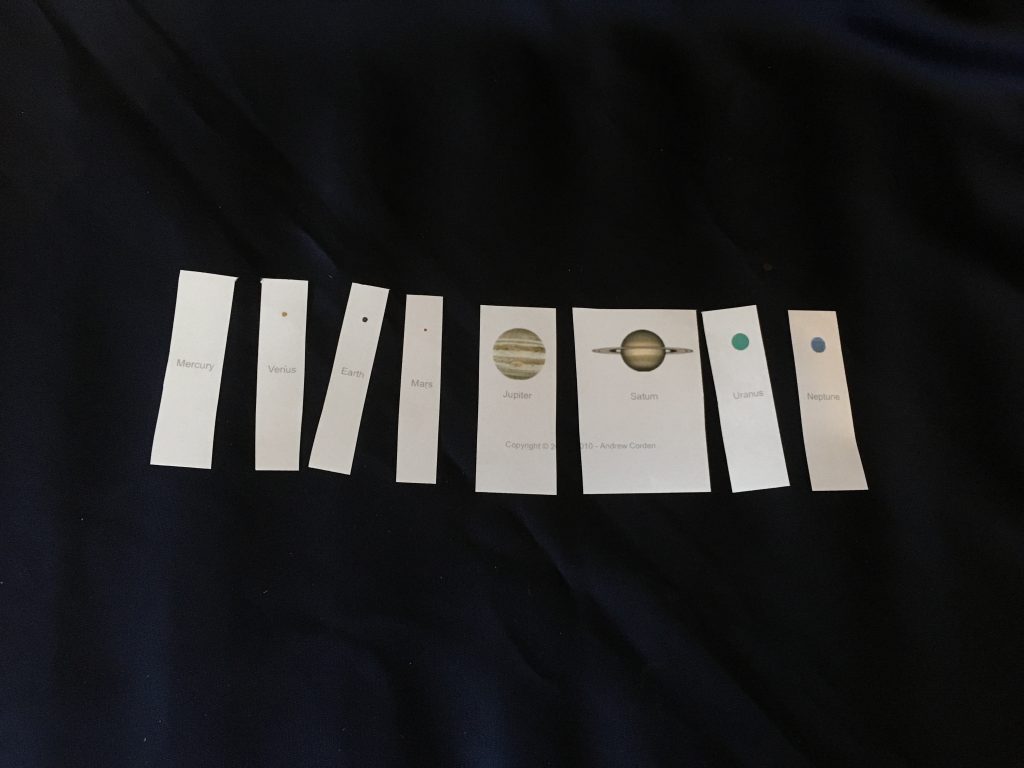
Step 2: cut out the planet markers. 
Step 3: fold the markers in half. 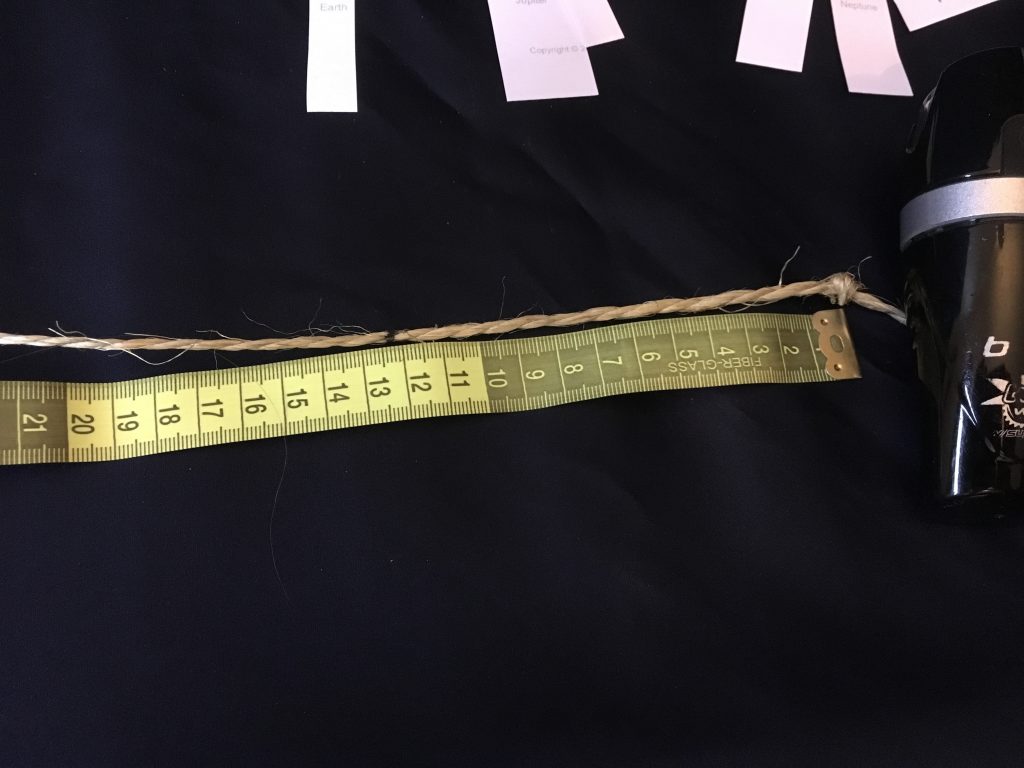
Step 4: measure the distance from the Sun (the knot) to Mercury. 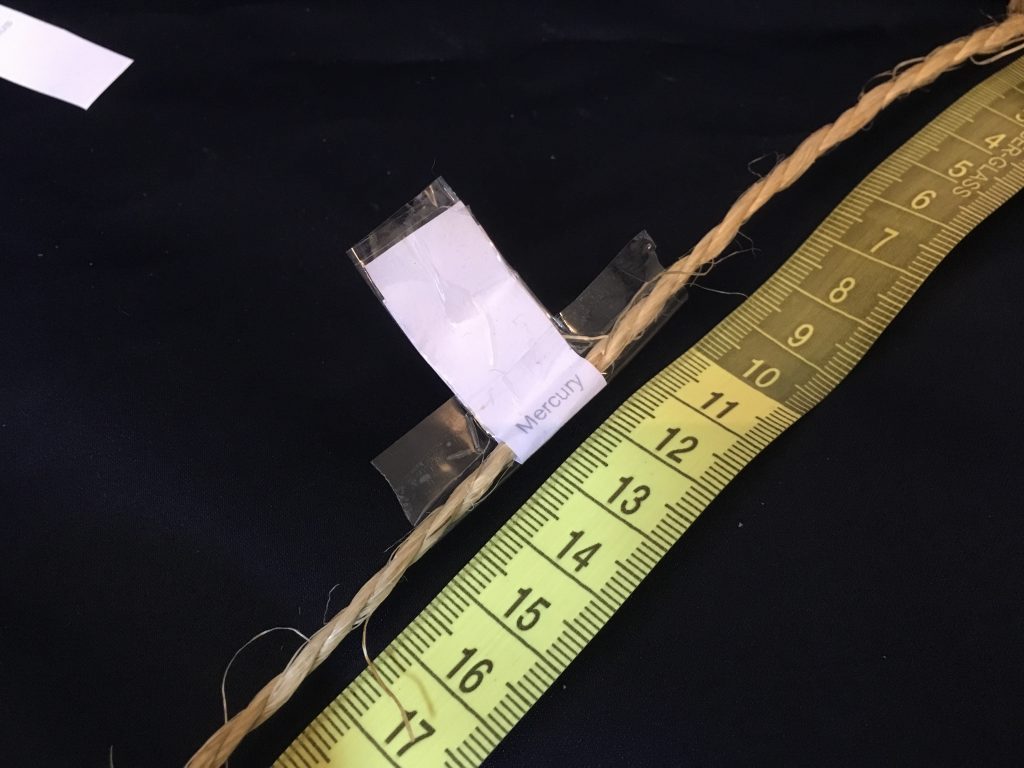
Step 5: tape the Mercury marker in position. 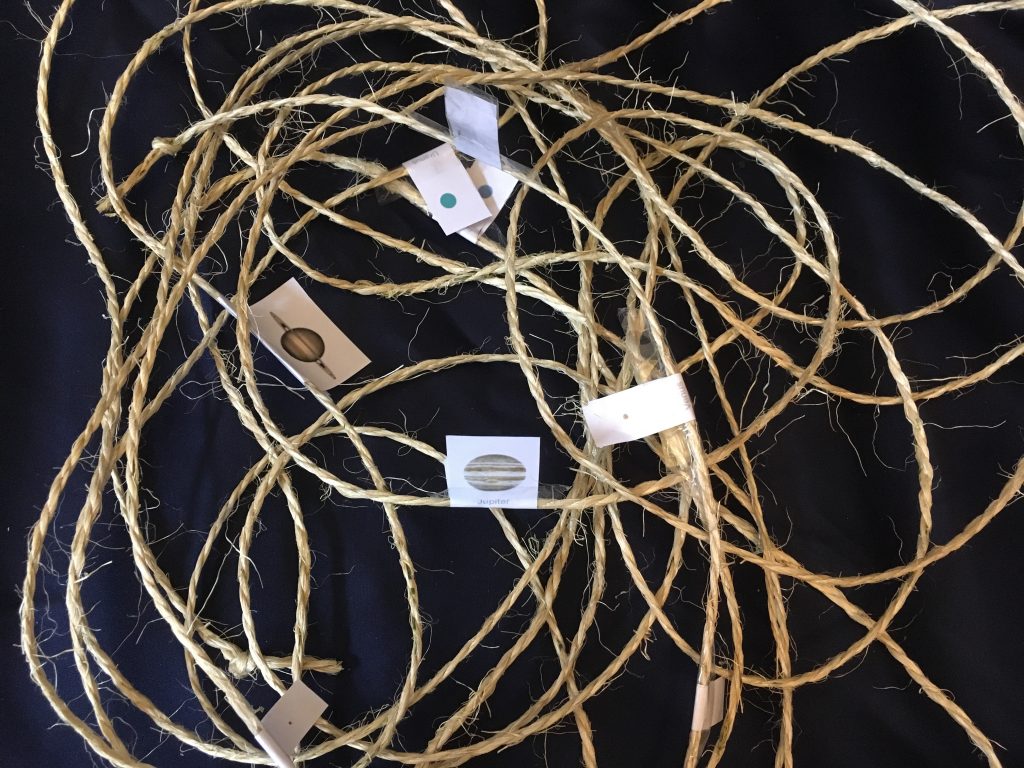
Step 6: repeat for the rest of the planet markers.
Follow-on discussion: The model we have built is not quite to scale. If we shrunk the entire solar system down to 10-metres in size, the sun would actually be just 3 milimetres in size, and most of the planets would be too small to see. The largest planet, Jupiter, would be less than half a millimetre! The size of the planets we have used in our model are too large.
Q: How long would out rope need to be for the sizes to be correct?
A: The rope would need to be ten times longer – a kilometre in length!
It is useful to get the students to display their models side by side to see how accurately they have measured them – there will be some discrepancies, and here you can ask them why that is, and how you could improve the accuracy of the model by measuring in different ways. The models can then be displayed on the classroom wall.
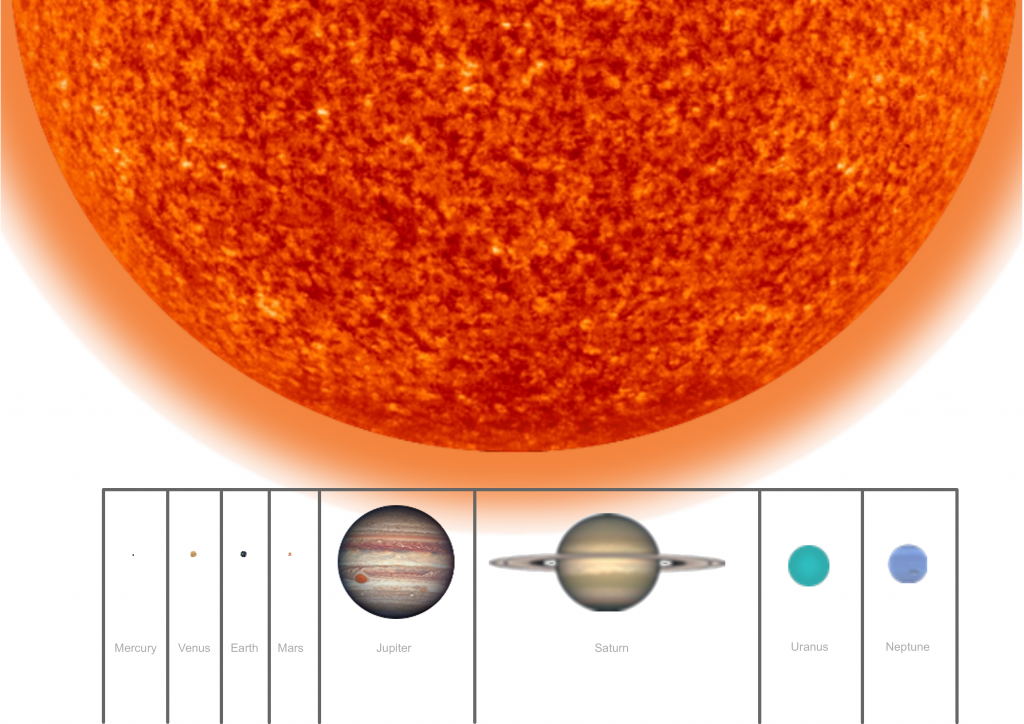
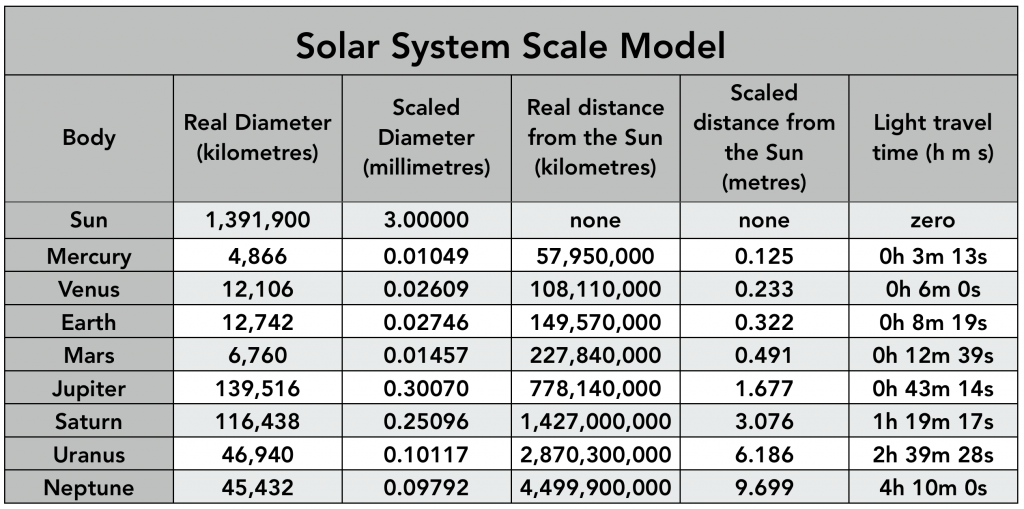
Extension: As an additional activity, the speed of light can be demonstrated on the scale model. Light travels at a speed of 300,000 km/s in a vacuum. In the Solar System, this means that light leaving the Sun takes just over eight minutes to reach the Earth. The times taken for light to reach each of the planets is listed in column 3 of the table, below. This works out to be a speed of 133 millimetres per second in our 20-metre model. The students can attempt to walk at the speed of light in the model. A comparison can be made with the New Horizons spacecraft that went to Pluto – it is (at the time of writing) the fastest spacecraft we have sent into the solar system, but even that took nine years to get to Pluto.
Students can be encouraged to design their own scale model to their own specifications. This could include drawing a scale model on a map of the town/city, designing a Solar System trail around the school grounds, or a piece of artwork for a classroom wall. This brings in more aspects of numeracy as well as art and design and can also bring in computing and teamwork if desired.
Common misconceptions:
- Students often think the Solar System looks like the various representations in books. In reality, books and graphics haveto make the planets look far too large, and put them far too close to each other, otherwise they would not be visible, or they would not fit on the page.
Curriculum links:
- Mathematics KS2 measurement – measure and compare lengths, understand time and duration.
SEND notes: With the planets tied to a continuous piece of rope, students with visual impairments can still get a good idea of the scale and amount of empty space in the Solar System in a tactile way. This can be used with non-visually-impaired students as well. A smaller version may be needed for visually-impaired students to better grasp the scale, so that they can feel the whole Solar System at once. The Exploratorium website (below) can be used to calculate a table-top version, although the planets will need to be unrealistically large in this case.
Use with other years: A model created by students in year 5 can be used to illustrate the scale of the Solar System to younger groups, especially if more robust or illustrative markers are used.
Linked activities:
Fruit Solar System demonstration, from the Royal Observatory Greenwich: https://www.stem.org.uk/rxyx3
Know Your Planets card game, can be used as an introductory or follow-on activity to provide more information on the different planets and their characteristics – astroEDU: https://astroedu.iau.org/en/activities/1615/know-your-planets/
Solar System calculator from the Exploratorium, can be used to create your own model on any scale you want: http://www.exploratorium.edu/ronh/solar_system/
Additional resources:
A more detailed description of the planets from National Geographic: https://www.nationalgeographic.com/science/space/our-solar-system/
Another source of information about the planets from NASA: https://solarsystem.nasa.gov/planets/overview/
A battery-powered solar system model (or orrery) or sale from the Science Museum: https://shop.sciencemuseum.org.uk/exhibition-ranges/wonderlab-collection/wonderlab-space/motorized-solar-system.htm
Copyright: Megan Argo 2019





